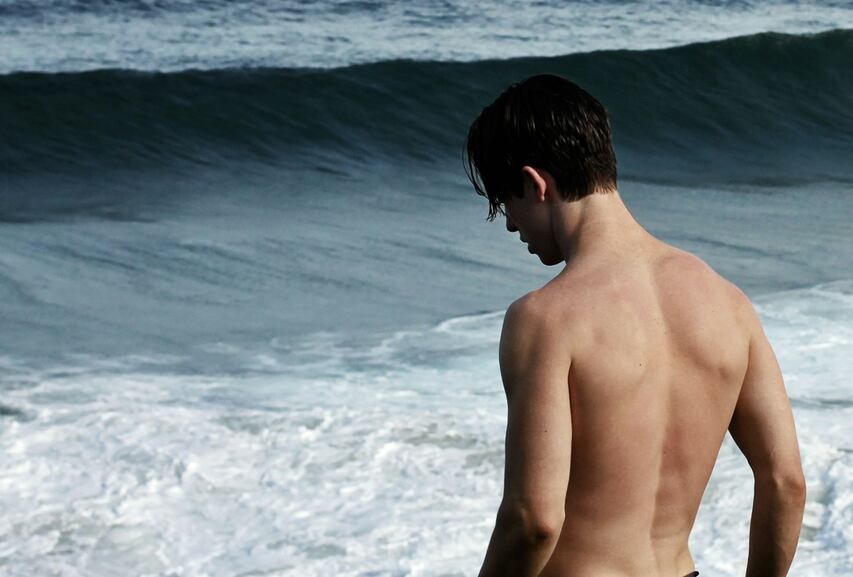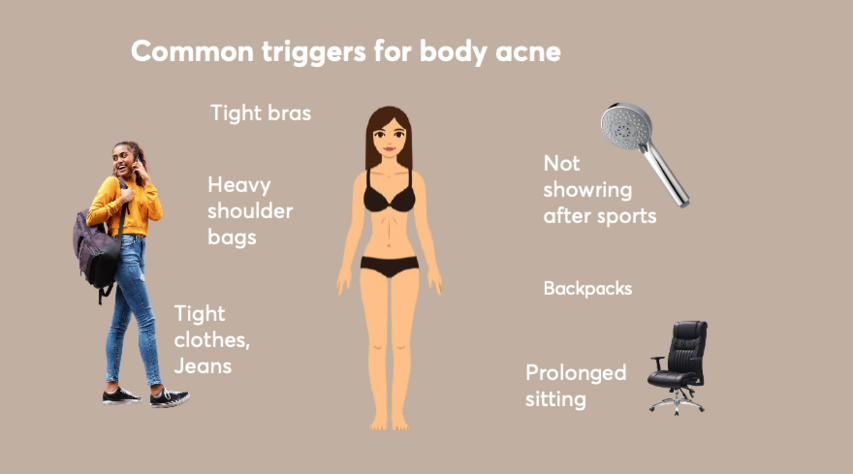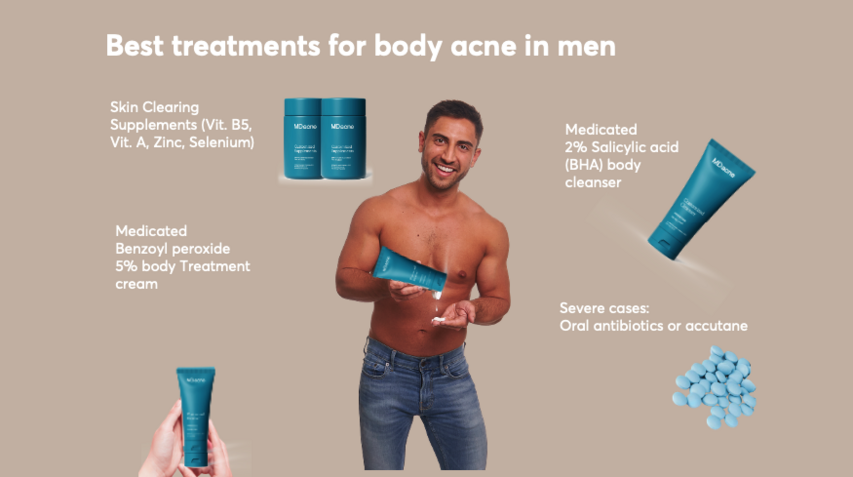Best treatments for body acne - 2025

If you're dealing with body acne, know that you're not alone, and there are many ways to prevent and treat it.
Body Acne vs. Folliculitis
Body acne is most common on the back and chest, and it develops similarly to facial acne: sebum and dead skin cells clog the skin’s oil glands, leading to bacterial growth and inflammation. Folliculitis, on the other hand, can affect anyone and appears as small red bumps, often without blackheads or cysts. Folliculitis occurs when hair follicles become inflamed due to bacteria, fungi, or irritation, often showing up on the buttocks, legs, or bikini line.
Types of Folliculitis
- Bacterial folliculitis: Small, itchy, pus-filled bumps due to bacterial infection.
- Hot tub folliculitis: Red, itchy spots caused by Pseudomonas bacteria found in improperly sanitized hot tubs.
- Razor bumps: Ingrown hairs caused by close shaving.
- Fungal folliculitis: Caused by yeast, it appears as itchy, red bumps, often on the back or chest.
Types of Body Acne
- Back Acne (Bacne): Triggered by genetic and hormonal factors, humidity, sweat, and friction.
- Chest Acne: Caused by similar factors as bacne; tight sports bras and synthetic fabrics can contribute.
- Folliculitis on Buttocks, Legs, and Bikini Line: Often from shaving, waxing, or tight clothing.

Tips to Prevent Body Acne
- Wear loose, breathable workout clothes to avoid friction and trapped sweat.
- Shower after sweating to remove bacteria and oil buildup.
- Change sheets and pillowcases weekly to reduce bacteria transfer.
- Avoid tight-fitting gear, like backpack or bra straps, on acne-prone areas.
Best Treatments for Body Acne
For optimal results, treat body acne with a medicated cleanser and a leave-on treatment. Topical treatments with salicylic acid and benzoyl peroxide are effective. For severe cases, consult a dermatologist for additional treatments like antibiotics or Accutane.
Recommended Products
- Salicylic Acid Body Wash: Unclogs pores, fights bacteria, and reduces inflammation.
- Benzoyl Peroxide Creams: Ideal for the back, chest, and buttocks, benzoyl peroxide helps reduce bacteria and inflammation.
Natural ingredients that can boost these treatments include tea tree oil, which has antimicrobial properties; green tea extract and licorice extract, which help lighten dark spots; and vitamin C, which evens skin tone.
Supplements for Body Acne
Vitamins like B5, A, zinc, and selenium support acne management by reducing oil production and inflammation. For example, MDacne’s Skin Clearing Vitamins contain key nutrients that help regulate sebum, support immune function, and reduce acne.
What Not to Do
- Avoid benzoyl peroxide washes: They don't stay on the skin long enough to penetrate and work effectively.
- Skip harsh scrubs and exfoliating brushes: These can damage the skin barrier and worsen acne.
- Use non-comedogenic moisturizers: These won’t clog pores and are safer for acne-prone skin.
When to Expect Results
Body acne requires patience. You should see some improvement within 4 weeks, with optimal results in about 10-12 weeks.
Shop:
MDacne Body Acne Treatment
MDacne Skin Clearing Vitamins + Minerals
Check also:
Acne on the body, back, and buttocks - 7 best tips
How to get rid of chest acne?
How to Get Rid of Pimples on the Butt
Keratosis pilaris - Best treatments | MDacne
References
- A 10% glycolic acid containing oil‐in‐water emulsion improves mild acne: A randomized, double‐blind placebo‐controlled trial. Journal of Cosmetic Dermatology, 10(3), 202-209.
- Over-the-counter Acne Treatments: A Review. The Journal of Clinical and Aesthetic Dermatology, 5(5), 32-40.
- Management of Truncal Acne Vulgaris: Current Perspectives on Treatment. Drug Therapy Topics, 77, 285-289.
- Treatment Modalities for Acne. Molecules, 21(8), 1063.
- Guidelines of care for the management of acne vulgaris. Journal of the American Academy Of Dermatology, 74(5), 945-973.e33.
To find the right acne treatments for your unique skin, take the free skin assessment by clicking here.




